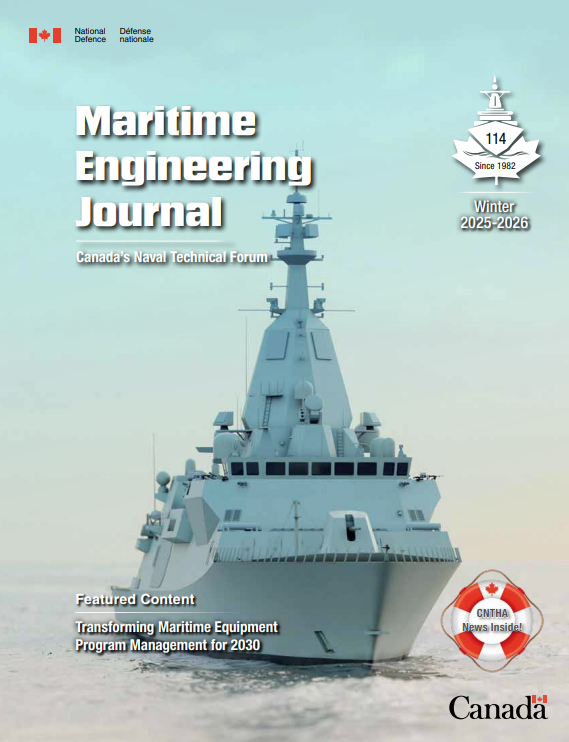Maritime Engineering Journal

Canada’s Naval Technical Forum
The Maritime Engineering Journal (MEJ) has been the principal publication of the Royal Canadian Navy’s Naval Technical Community; this community includes past and present serving members of the Royal Canadian Navy (RCN) and Public Servants. Since 1982, the MEJ provides unclassified discussion surrounding naval technical challenges, naval history, and human interest stories from within the Naval Technical Community.
Feature Article
Note: The feature article hyperlinks will bring you directly to the article location within the edition’s PDF.
Reflections on My Role in the Victoria-class Submarine Sustainment Program [Issue 114]
Serving as an Australian submariner on exchange with the Submarine Section of the Director General Maritime Equipment Program Management (DGMEPM) has been one of the most formative experiences of my career.
The New Victoria-class Bow Array [Issue 113]
H MCS Windsor (SSK-877) is currently undergoing an Extended Docking Work Period (EDWP), a scheduled maintenance and modernization phase intended to extend the submarine’s operational life and enhance its capabilities.
Latest Issue

Issue No. 114 [PDF, 2.056 MB]